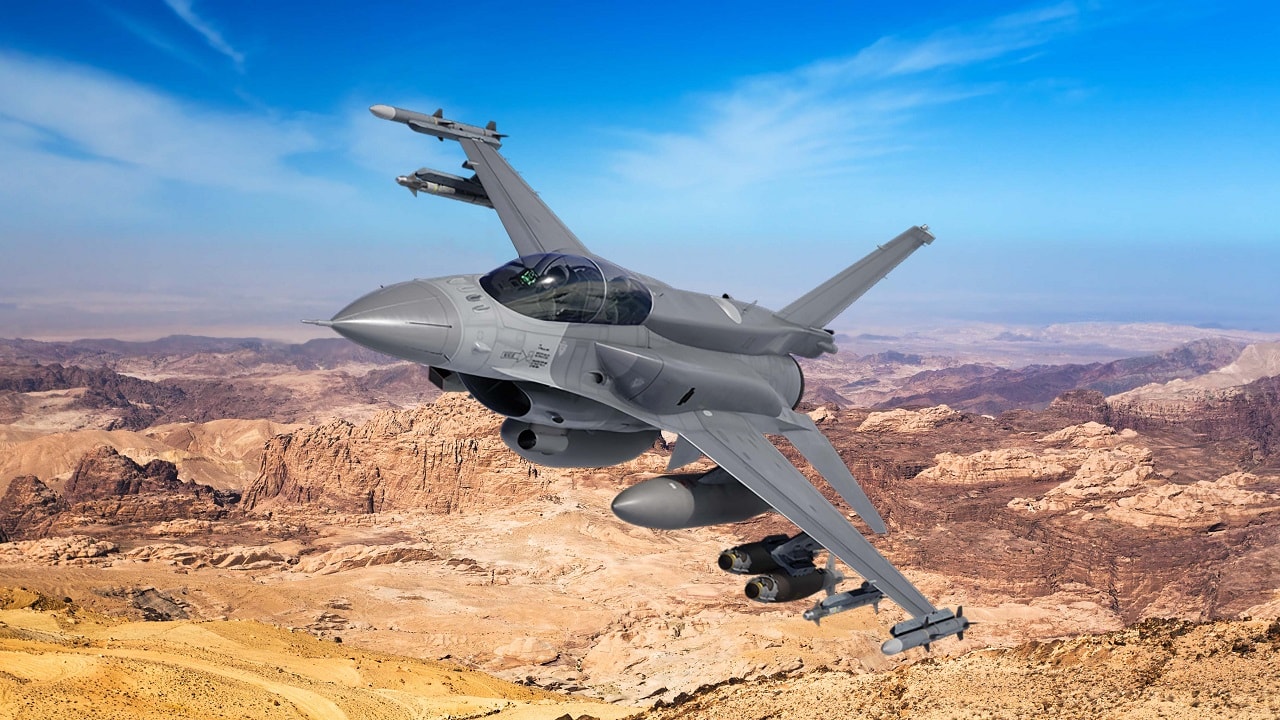Russia’s invasion of Ukraine has raised the concern that Moscow’s new best friend China will be encouraged to do the same thing to Taiwan. (These worries persist notwithstanding the far greater logistical difficulties of sending an invasion force across the Taiwan Strait, relative to the convenience for Russia of a shared land border with Ukraine.)
This in turn leads to the question of how well equipped Taiwan’s military is to counter China’s invasion forces from a technological standpoint. (We won’t even consider the huge manpower disparity for now.) Among the concerns is that the Taiwanese Air Force — officially the Republic of China Air Force (ROCAF) — lacks a fifth-generation fighter to put it on equal footing with the People’s Liberation Army Air Force (PLAAF).
In the meantime, the ROCAF’s fourth-generation F-16V Vipers are at least being given a boost, thanks to a technological force multiplier known as infrared search and track systems, or IRSTs.
The Basics
This latest news comes to us courtesy of Joseph Trevithick:
“IRSTs would give Taiwanese Vipers a hugely valuable additional tool to spot and track aerial threats, especially stealthy ones like China’s J-20 fighters. This comes amid delays in the Taiwanese Air Force’s acquisition of new Block 70 F-16C/Ds, but the new sensor systems could also be used on its fleet of upgraded F-16Vs…The U.S. military’s Defense Security Cooperation Agency (DSCA) announced [last week] that the U.S. State Department had approved the possible sale of IRSTs to Taiwan. The proposed deal, which also includes ancillary equipment and support services, has an estimated total value of approximately $500 million…The DSCA press release does not specify what kind of IRST system, but does name Lockheed Martin as the ‘principal contractor.’”
Indeed, Lockheed Martin is quite proud of its working relationship with Taiwan’s armed forces, dedicating an entire info page to this business partnership on its official website. The company touts past and present weapons systems such as the aforementioned F-16 as well as the F-104 Starfighter, the P-3 Orion antisubmarine warfare plane, and the C-130H. In addition, Lockheed Martin “was also the first defense contractor to establish an Industrial Cooperation (IC) Agreement with Taiwan’s Industrial Development Bureau (IBD), providing new technologies, know-how, and capabilities to local industry.”
Lockheed Martin is clearly the logical choice to supply IRSTs for the ROCAF warbirds.
IRSTs serve as a force multiplier in part because they can still be used in conjunction with traditional radars, providing a powerful tandem of sensor data. They have an advantage over those traditional radar systems in that the targeted adversary’s aircrews will not know they have been detected due to the passive nature of the IRST — a sharp contrast to radar systems in active-search mode that make your presence and intentions obvious to your adversaries.
Yet another benefit of IRST is the fact that it is unfazed by a target’s features designed to reduce radar cross-section and is impervious to electronic warfare attacks intended to jam radars and other radio frequency emissions.
“As such,” Trevithick writes, “IRSTs provide a particularly valuable alternative to traditional radars for aircraft operating in environments where they are expected to encounter stealthy opponents, heavy electronic warfare attacks, or both.”
Stacking Up Against China’s J-20
That’s all well and good, but will the IRST make Taiwan’s Vipers true equals against the PLAAF’s fifth-generation Chengdu J-20? Unfortunately, probably not. The J-20 still has the advantage of stealth technology and thrust vectoring for superior maneuverability. That said, the F-16 surprisingly does have a max airspeed advantage, albeit a very slight one, at Mach 2.05 vs. Mach 2.0.
What’s more, the Viper has a cannon, while the J-20 does not. Granted, recorded history shows that the only supersonic jet-to-jet gun kill occurred way back in 1972 in the skies over Vietnam. Nonetheless, there’s the philosophy of “better to have and not need than vice versa.” Unlike radar-guided missiles, cannon shells can’t be fooled by chaff or similar countermeasures, and unlike IR missiles, they are not fooled by flares or other heat sources. In the relatively confined airspace over Taiwan, that could be a difference-maker.
The Way Ahead?
Besides the F-16Vs, the ROCAF still has a significant number of older F-5E Freedom Fighters, aka Tiger IIs, designed in 1959. There’s also the homegrown Aerospace Industrial Development Corp Indigenous Defense Fighter and AT-5 Brave Eagle. But the former is of 1989 vintage, while the latter is currently used as a trainer, not a frontline combat aircraft.
Maybe a future White House administration will have the courage to sell F-35s to Taiwan and thus give them a greater fighting chance against Xi Jinping’s aerial minions. Time will tell.
Christian D. Orr is a former Air Force Security Forces officer, Federal law enforcement officer, and private military contractor (with assignments worked in Iraq, the United Arab Emirates, Kosovo, Japan, Germany, and the Pentagon). Chris holds a B.A. in International Relations from the University of Southern California (USC) and an M.A. in Intelligence Studies (concentration in Terrorism Studies) from American Military University (AMU). He has also been published in The Daily Torch and The Journal of Intelligence and Cyber Security. Last but not least, he is a Companion of the Order of the Naval Order of the United States (NOUS).

